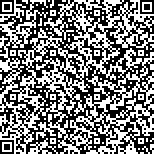| 引用本文: | 李影,秦丽欢,雷秋良,罗加法,杜新忠,闫铁柱,刘宏斌.小流域农业面源污染监测断面设置与污染物通量估算研究进展.湖泊科学,2022,34(5):1413-1427. DOI:10.18307/2022.0501 |
| Li Ying,Qin Lihuan,Lei Qiuliang,Luo Jiafa,Du Xinzhong,Yan Tiezhu,Liu Hongbin.Review on agricultural non-point source pollution monitoring sections layout and pollutant loading estimation in small watershed. J. Lake Sci.2022,34(5):1413-1427. DOI:10.18307/2022.0501 |
|
| |
|
|
| 本文已被:浏览 4841次 下载 4787次 |

码上扫一扫! |
|
|
| 小流域农业面源污染监测断面设置与污染物通量估算研究进展 |
|
李影1,2,3, 秦丽欢4, 雷秋良1, 罗加法5, 杜新忠1, 闫铁柱1, 刘宏斌1
|
|
1.中国农业科学院农业资源与农业区划研究所, 农业农村部面源污染控制重点实验室, 北京 100081;2.中国科学院地理科学与资源研究所, 资源与环境信息系统国家重点实验室, 北京 100101;3.中国科学院大学,北京 100049;4.北京市生态环境监测中心,北京 100048;5.新西兰农业科学院,汉密尔顿 3240
|
|
| 摘要: |
| 流域尺度面源污染的监测是系统认识农业面源污染的发生、迁移及转化过程, 并对其进行有效控制的重要基础. 当前, 田块尺度的面源污染监测方法比较成熟, 而流域尺度的监测, 尤其是监测断面的布设及采样频率设置等方面的研究较少. 本文详细梳理了小流域采样断面布设、采样频率优化和河流断面通量估算3方面的主要进展. 1)从小流域样点布设来看, 包括常规监测采样设计、针对性监测采样设计和融合前两种类型的监测采样设计3种类型, 点位布设方法上有遗传算法、模糊逻辑法、熵值法和模型法等, 样品采集方式包括随机采样、复合采样、综合采样以及连续采样4种类型, 其中复合采样应用广泛;2)从采样频率来看, 1~2周一次的采样频率即可精准获取污染负荷通量, 若需要进一步提高精度, 可在水文/水质变异大的时期提高监测频率及在特殊断面加密布点;3)在通量估算上, 当前主要的计算方法有平均法、插值法和回归/曲线法3类方法, 其中流量加权的浓度估计法、插值算法和LOADEST法是简便且精确的方法, 方法的选择上也可根据不同时期流域污染源特征进一步优化. |
| 关键词: 小流域 面源污染 监测点布设 监测频率 通量估算 |
| DOI:10.18307/2022.0501 |
| 分类号: |
| 基金项目:国家自然科学基金项目(42007095,U20A20114,42177325)和中国农业科学院科技创新工程协同创新项目(CAAS-GXAAS-XTCX2019026-03)联合资助 |
|
| Review on agricultural non-point source pollution monitoring sections layout and pollutant loading estimation in small watershed |
|
Li Ying1,2,3, Qin Lihuan4, Lei Qiuliang1, Luo Jiafa5, Du Xinzhong1, Yan Tiezhu1, Liu Hongbin1
|
|
1.Key Laboratory of Nonpoint Source Pollution Control, Ministry of Agriculture and Rural Affairs, Institute of Agricultural Resources and Regional Planning, Chinese Academy of Agricultural Sciences, Beijing 100081, P. R. China;2.State Key Laboratory of Resources and Environmental Information System, Institute of Geographic Sciences and Natural Resources Research, Chinese Academy of Sciences, Beijing 100101, P. R. China;3.University of Chinese Academy of Sciences, Beijing 100049, P. R. China;4.Beijing Municipal Ecological and Environmental Monitoring Center, Beijing 100048, P. R. China;5.AgResearch Limited, Ruakura Research Centre, Hamilton 3240, New Zealand
|
| Abstract: |
| Watershed-scale non-point source pollution monitoring is an important basis for systematically understanding the occurrence, transportation and transformation processes of agricultural non-point source pollution and its effective control. Presently methods monitoring non-point source pollution at field scale are relatively mature, while methods applied at watershed scale, particularly the layout of monitoring section and sampling frequency setting, are rarely studied. This paper reviewed the main progress of sampling section layout, sampling frequency optimization and loading estimation of river sections. From the perspective of sampling layout in small watershed, there are three types of monitoring design including probabilistic design, targeted design and both. Sampling points were located with genetic algorithm, fuzzy logic method, entropy and modelling method, etc. Sample collection methods include random sampling, compound sampling, comprehensive sampling and continuous sampling. Compound sampling is widely used. Concerning the sampling frequency, once every 1-2 weeks is sufficient to obtain accurate pollution loading. If higher accuracy is necessary, the monitoring frequency and special sections can be increased when hydrology/water quality variation is large. For loading estimation, average method, interpolation method and regression or curve method were widely used. Concentration estimation algorithm by flow-weighted, interpolation and LOADEST are simple and exact. Selection of methods could be further optimized based on the characteristics of pollution sources in different periods of the basin. |
| Key words: Small watershed non-point source pollution layout of monitoring points monitoring frequency loading estimation |
|
|
附件
|
|